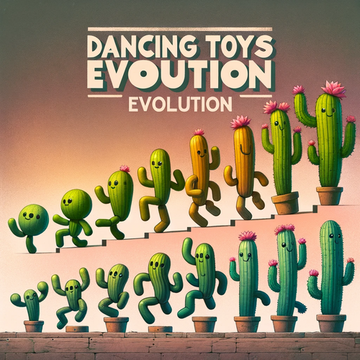Introduction
Dancing toys, with their rhythmic movements and playful designs, have been a staple in the world of playthings for generations. These toys, evolving from simple mechanical designs to sophisticated interactive models, reflect the technological and cultural shifts in toy manufacturing and consumer preferences.
Early History of Dancing Toys
The roots of dancing toys can be traced back to ancient civilizations, where toys resembling dancers were crafted for entertainment and cultural expression. These early toys were often simple, hand-operated figures that mimicked basic dance movements.
Mechanical Dancing Toys Era
The industrial revolution brought about significant advancements in toy manufacturing, leading to the creation of mechanical dancing toys. These toys, often wind-up models, featured intricate mechanisms that allowed them to perform various dance movements.
Impact of Technology on Dancing Toys
The introduction of electronics in the toy industry revolutionized dancing toys. These new models incorporated sound, lights, and more complex movements, greatly enhancing the play experience and mimicking more realistic dance moves.
Dancing Toys in Popular Culture
Dancing toys have held a prominent place in popular culture, featuring in movies, TV shows, and advertisements. Iconic dancing toys from various eras have become symbols of childhood nostalgia.
Educational Value of Dancing Toys
Beyond entertainment, dancing toys serve an educational purpose. They encourage children to explore rhythm, music, and movement, aiding in the development of cognitive and motor skills.
Materials and Manufacturing
The evolution of dancing toys also reflects changes in materials and manufacturing processes. From wooden and metal parts to modern plastics and sustainable materials, the focus has shifted towards safety and environmental responsibility.
Interactive Dancing Toys
The latest trend in dancing toys is the integration of interactive technology. These toys respond to voice commands, touch, or even smartphone apps, providing an engaging and dynamic play experience. Learn more about dancing Cactus Toy Fun Facts.
Collectible Dancing Toys
Vintage dancing toys have become collectibles, valued for their design, rarity, and historical significance. Collectors and enthusiasts seek out these toys, often preserving a piece of toy history.
Global Trends in Dancing Toys
Dancing toys vary significantly across cultures, reflecting regional music, dance styles, and traditions. This diversity showcases the global appeal and adaptability of these playful creations.
Future of Dancing Toys
The future of dancing toys is promising, with predictions of further technological integration such as AI and virtual reality. These advancements could lead to even more immersive and interactive play experiences.
Dancing Toys as Therapeutic Tools
Dancing toys have found a place in therapeutic settings, assisting in education and development for children with special needs. Their rhythmic movements and interactive features can be particularly beneficial in various therapies.
Marketing and Consumer Trends
Consumer preferences and marketing strategies in the toy industry have evolved, with digital marketing playing a key role in promoting the latest dancing toys. This shift reflects the changing landscape of toy retail and consumer engagement.
Ethical Considerations in Toy Manufacturing
The manufacturing of toys, including dancing toys, raises important ethical considerations. Issues such as fair labor practices and environmental sustainability are increasingly significant in the toy industry.
Conclusion
The journey of dancing toys from their humble beginnings to their current state is a testament to human creativity and technological progress. As we look to the future, the potential for innovation in this playful and dynamic segment of the toy industry remains boundless.





